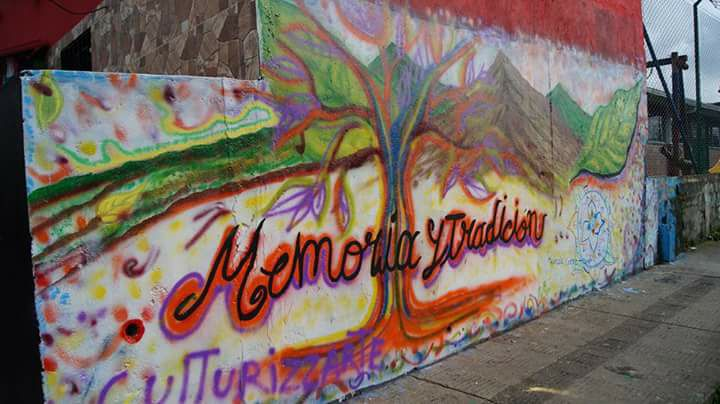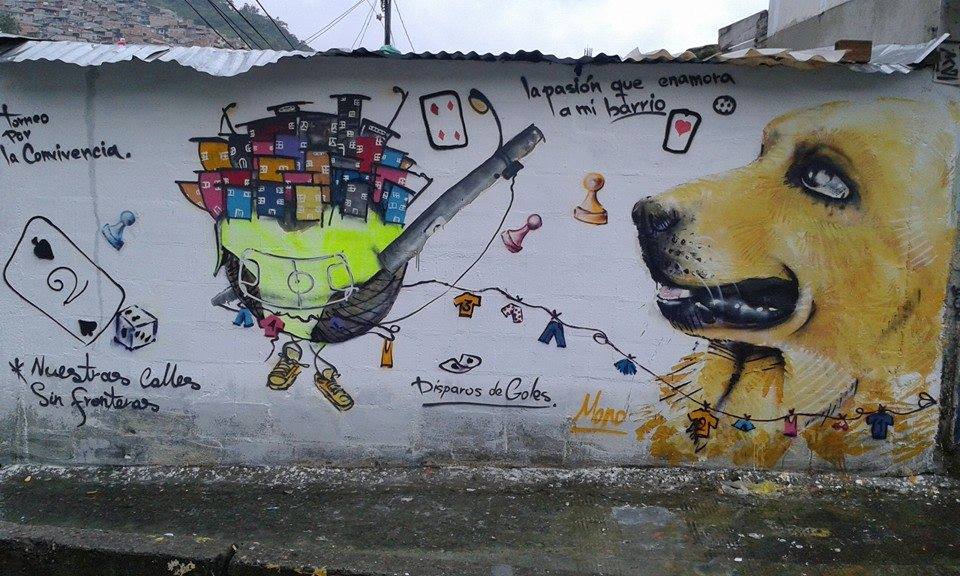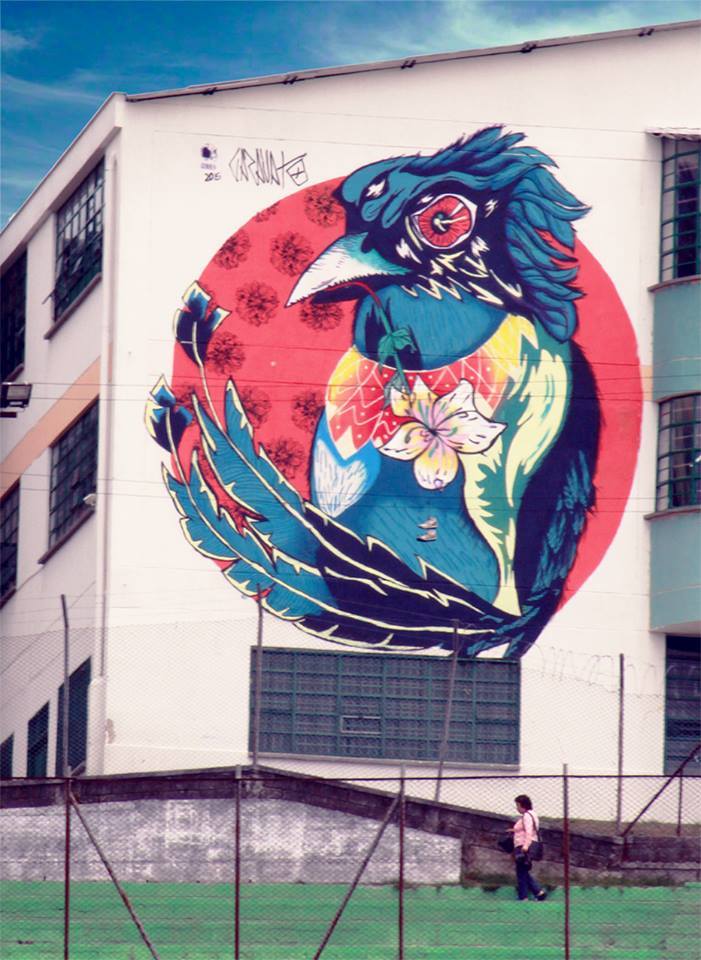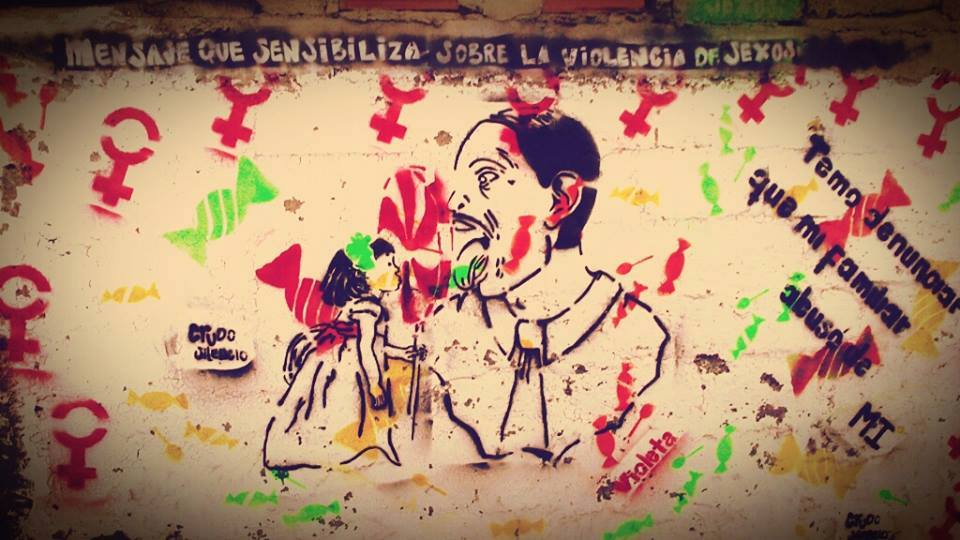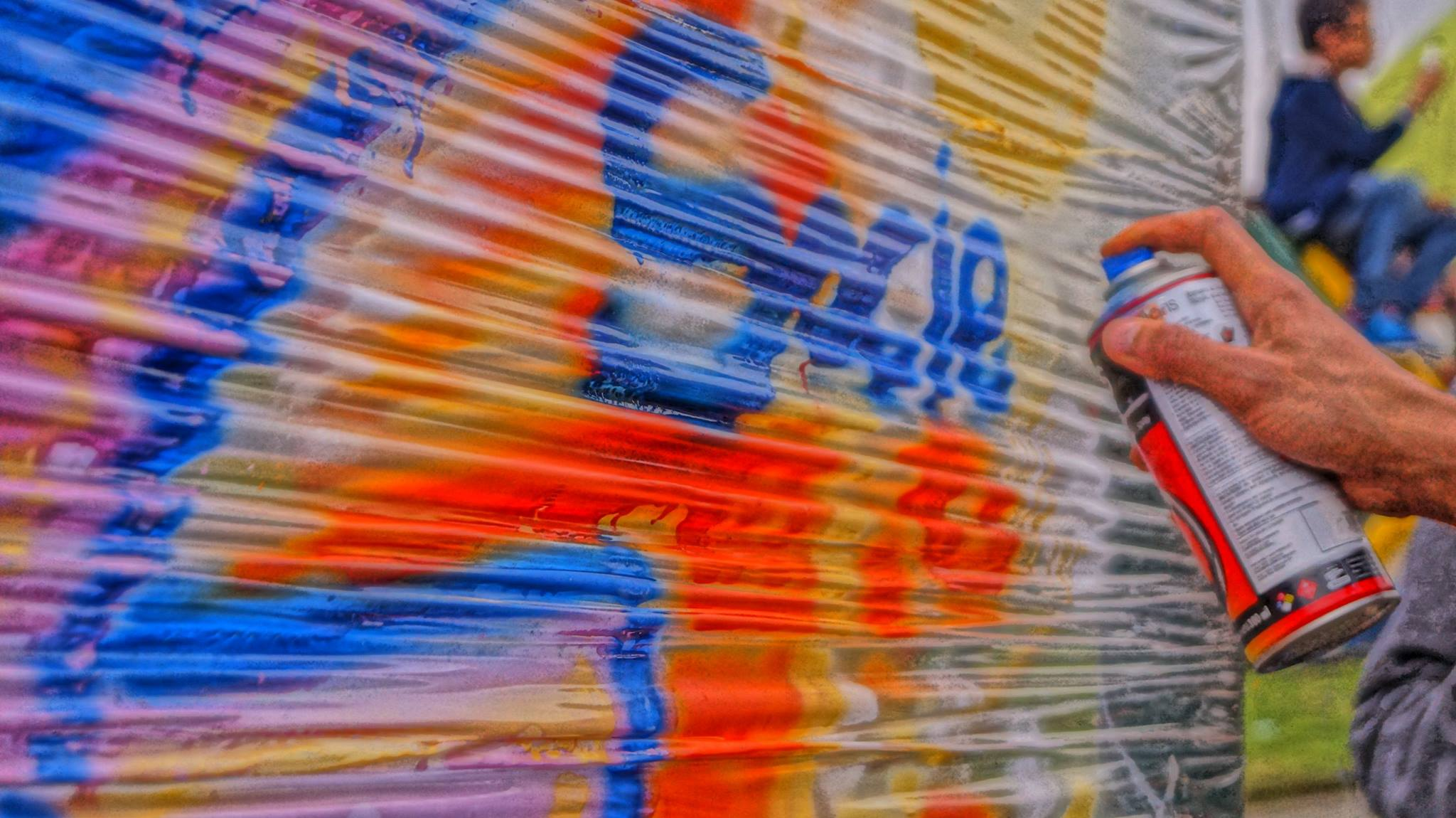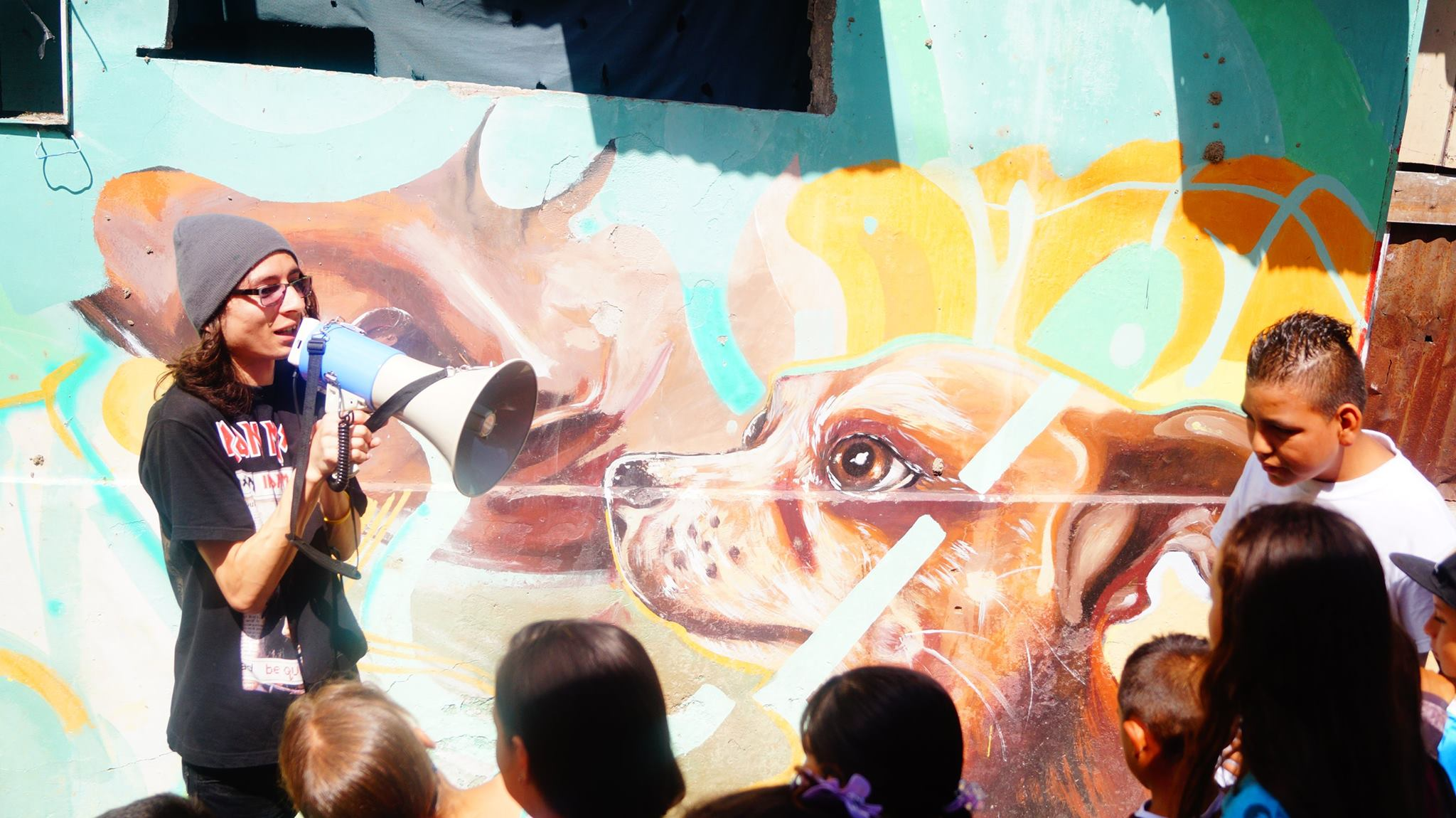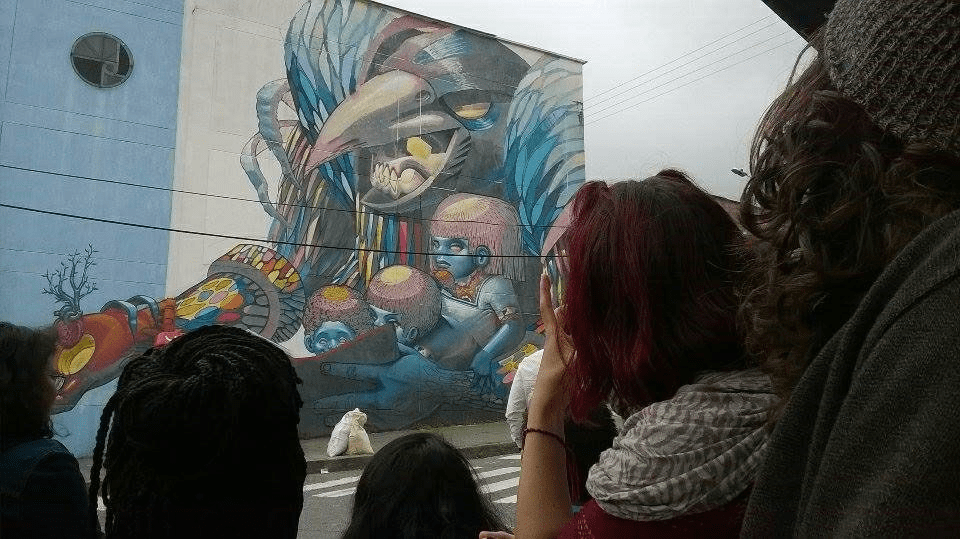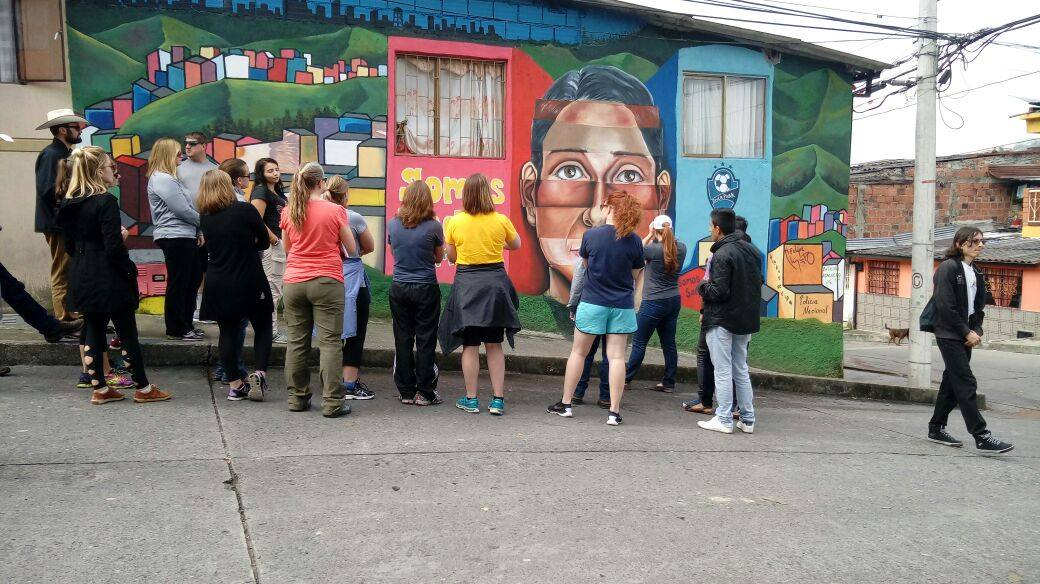
Relationship Area
May 21, 2019Memory Gallery
August 19, 2021Look at the photographs gallery
Lienzos de la memoria is a project that brings together different
tools that allow the Huellas de
Reconstruct life through visual and sound stories and narratives, the
how the first settlers of the neighborhood, they were made to a roof
plastic with guadua columns. In addition, through
Murals, free, stencil and other artistic techniques are made known
stories that move and inspire hope and the search for
better living conditions for the community, and how the
transformation of the neighborhood has impacted the quality of life of the
inhabitants of this sector of the city, which is reflected in walls and
paredes, paintings, vinyls, aerosol sprays, brushes, and brushes.
Tap to play the video or watch it on YouTube
1. At a certain moment we realized that we needed a way to mark the territory, but don't mark it as if you want to limit it and say this piece is mine, but represent it. We wanted Solferino to be represented above the other neighborhoods, put it in some way, and we said: “let's make walls”. The wall has a particular history, and when the artist came to paint, we didn't know what was going to be done, So we asked him how he worked and he told us: “I am capable of doing this, I do this", then we already went, We took a photo of two children who were always in our activities and those two children are the ones portrayed there..

2. This mural was made within the framework of an activity that was carried out to commemorate Women's Day. What the artist does is represent a woman who is a mother, who is a fighter, peasant, which is a lot of things at once. This is a universal woman and it is what has been portrayed on that wall: a woman who can do everything, who is not afraid of anything.

3. This mural was done in October 2016 within the framework of the Solferino festivities organized by the foundation, within the project “We are history, We are Solferino” that is born from the reconstruction of memory that is carried out. On the wall is the image of Juliet, one of the founders of the neighborhood. There is a cat in the center of the image, because she and several people in the neighborhood have an initiative to work for animal rights. In the other corner of the wall, There is a hand and from there a house sprouts: This represents the entire issue of self-construction that occurred in the Solferino neighborhood, information collected from the memory project. The issue with blue tones, The flowers and leaves represent all the vegetation that surrounds us, the dark colors because at night the Solferino is inhabited, it's happy, you see the children in the street, since during the day people do not stay; travels to other places in the city to work, to study, during the day it stays a little emptier, At night is when you see a lot more people..

4. It is written “life” because we wanted to leave a message in the star park, place that has been hit by violence, death, drugs and the strongest word, most representative at that time, it was life. Some time later the wall is changed and the same message is written, but with another style. The idea is that every time the wall is changed, the message remains, last in time.

5. This wall is located before going up to Solferino, on a retaining wall. It is done within the framework of the signing of the peace agreements and represents leaving all that war behind and starting over for the peasant community.. It also plays a lot with the way the neighborhood was born.. In front of the people there is an open landscape that represents a bit of what the Solferino land and the commune were like. 5 before they began to build it and how peasant families arrived, Displaced people looking for a piece of land to build their houses. It's a rebirth.

6. This mural was born in 2016 and arises from the celebration of the birthday of the Solferino neighborhood and is born from the project “We are history, we are Solferino”. The artist Felipe Chiquito makes a face made of scraps, which represents all that unity and diversity from which the Solferino neighborhood was born.. The little houses inscribed in the mountains are the geography we have, Plus they are full of colors; background that represents us. The strip located at the top is a very important element that symbolizes that city that we see towards the background, that city where we have to go to study, to work or earn a living, and then come back here.

7. This wall makes it a suburb for rap SR, a rap collective from the city of Manizales, In the center is the logo of the rap collective and what the wall shows us in general is the city, which we associate as we said before, with all the city theme that we see towards the background, the city to which we have to travel to work, for study, because here in the sector we almost live on the outskirts of the city, we are registered in the largest commune, in one of the most problematic communities, So the wall portrays that a little bit., an image of the city center where we have to go to earn a living.
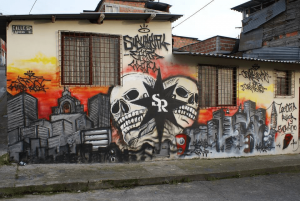
8. This wall was made in April 2016. The wall plays with the theme of the reconstruction of the neighborhood's memory, Therefore, the artist was told how this entire process occurred., How it was and continues to feel the unity of people to move their neighborhood forward and how they also face many problems of violence, of drugs, of deaths.
The union of the Solferino neighborhood is then represented, through a family of prairie dogs who protect each other and are threatened by a figure at their side: a vulture. The vulture in this case, represents everything bad that has always stalked and has stalked the Solferino neighborhood, that is waiting. It is that latent violence that is waiting for something to happen to that family to arrive and attack..

9. This mural is made in 2014 in the first installment of the urban narratives festival. The wall is gigantic and for approximately three years it was the largest wall in the city. There is a figure educating some children through a book, the figure is a bird, a barranquero, flagship bird of the city of Manizales. This is found swallowing a skull that represents everything that is death., everything that is danger, what is evil. Children with red eyes personify a cosmogony that says that eyes turn red when people are acquiring knowledge.. The book with its cover that says “my neighborhood is not what they paint it as.”, It is colorful” plays with the phrase “don't judge the book by its cover”, very important aspect, since people judge Solferino without really knowing it. The theme of the hand, The hand that is extended and a heart springs from it wants to show that the inhabitants of the Solferino neighborhood receive their visitors with their hearts in their hands..

10. “Give her ovaries” is the phrase that women use to project their resilience, their contribution in the construction of the neighborhood and the drive and dedication with which they forged their families. Solferino is a neighborhood that was made with ovaries, with the effort, sweat and commitment of working women who today are mothers and grandmothers of a generation of children and young people who resist by printing the reality of the territory on the streets and walls.

11. Working hands that illuminate the Solferino, laborious hands that founded the homes we inhabit today. These sonorous dark and shining hands are covered with a skin of invincible bark., innate characteristic of its inhabitants who are inexhaustible and generous sources of life; hands that are the tool of the soul.

12. Tribute to Juan Carlos Henao, main figure of the brilliant and unforgettable campaign ofOnce Caldas in the Copa Libertadores 2004. It is a recognition and gratitude towards a player who has been an example of discipline, a leading man, but above all a great person, qualities of invisible heroes who reflect greatness and inspire young people to fight and make the neighborhood, the color of a passion.



